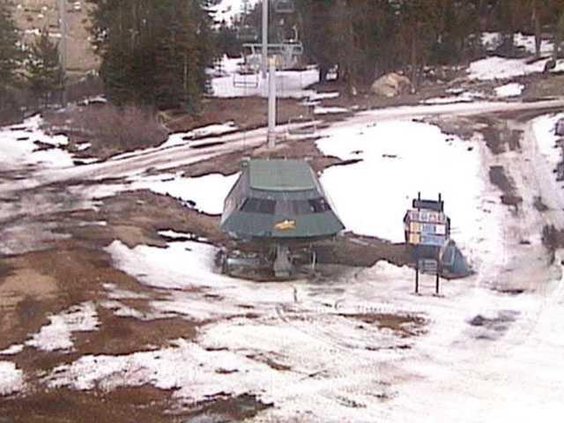A pending deal that temporarily relaxes salinity and dissolved oxygen standards in the San Joaquin River at Vernalis south of Manteca could prevent the Stanislaus River from going dry this year plus give South San Joaquin Irrigation District some breathing room.
The additional cushion the agreement may provide, though, is not likely to allow much carryover into 2016 due to rapidly deteriorating conditions on the Stanislaus River watershed.
The accord was hammered out between the Bureau of Reclamation and the National Marine Fisheries Service along with SSJID and Oakdale Irrigation District thanks in part to efforts from Congressmen Jeff Denham, R-Turlock, and Tom McClintock, R-Roseville. It reduces releases from New Melones Reservoir this spring.
The California Water Resources Control Board needs to sign off on the deal relaxing spring flows aimed at helping young Chinook Salmon reach the Pacific Ocean.
If it gets the final OK from the state, it means SSJID and OID can abandon the only alternative they had to protect fish which was essentially to drain Lake Tulloch to make sure salmon wouldn’t be shocked by significant swings in water temperatures. Failure to protect fish would not only harm the Stanislaus River environment but could jeopardize strong standings the districts have when it comes to water rights
It gives the two districts 450,000 acre feet of water to split. The SSJID and OID have superior rights to 600,000 acre feet of run-off each year on the Stanislaus River watershed plus carry over conservation accounts in New Melones.
But runoff is trending significantly behind even last year’s dismal spring.
• • •
Shields: Things are now worse than the worst case scenario
So far this water season that started Oct. 1, some 200,000 acre feet of water has flowed into New Melones. At the same time last year there was 346,000 acre feet of water that flowed into the reservoir. Typically in a normal year there would be well over 500,000 acre feet that would have entered New Melones by now.
The runoff from storms this year is actually worse than 200,000 acre feet. That’s because a third of the inflow into New Melones so far this year are releases from Beardsley and Donnells reservoirs operated on the upper Stanislaus by the SSJID and OID.
“It’s worse than the worst case scenario that we were projecting,” noted Jeff Shields, South San Joaquin Irrigation District general manger.
That’s because several light storms anticipated during the past three weeks did not materialize in the higher elevations to help with the lean snowpack. Nor was there any measurable rainfall in the lower elevations or the valley.
While both are critical, the key is the Sierra snowpack that’s serves as a natural reservoir providing upwards of 60 percent of all developed water for California. In some spots at mid-month electronic snow surveys in the lower elevations showed snowpack at 12 percent of normal. The manual measurements taken on April 1, though, will provide the final numbers that reservoir operators will use to project water deliveries through Sept. 30.
The deal could make it possible for SSJID to meet deliveries capped at 36 inches for farmers and at 80 percent for the cities of Manteca, Lathrop, and Tracy.
Given that half of the SSJID irrigators use more than 36 inches in a year to need crop to market, Shields anticipates farmers will resort to wholesale pumping which in turn will put pressure on the aquifer supplies not just for the cities of Manteca and Lathrop that blend surface water with groundwater but Ripon that relies exclusively on groundwater.
• • •
Farmers switching to groundwater will impact cities & rural residents
Shields said that is expected to cause a big drop in water tables with those with wells only 80 to 100 feet deep such as for rural homes flirting with the possibility of encountering significant problems.
The deal, if blessed by the state, means there could be as much as 115,000 acre feet left in New Melones on Sept. 30 out of a capacity of 2.4 million acre feet.
Shields said that even though the district and OID have a court order protecting its water that will account for a large chunk of what would remain in New Melones on that date, he noted that the Endangered Species Act “is a powerful law” tempting the Bureau to commandeer water that doesn’t legally belong to them to meet fall fish flow requirements. Fall flows aren’t addressed in the proposed deal as they occur after Oct. 1.
Without the deal, however, New Melones is projected to drop below 80,000 acre feet sometime in August to revert to dead pool status. That means the remaining water is below reservoir outlets. The only way water from New Melones could reach the Stanislaus and keep flowing is if it is pumped out.
New Melones on Tuesday was at 578,748 acre feet, some 27,000 acre feet less than a month ago. In a normal year in March the water level would be rising. Instead it has dropped 5.13 inches so far this month.
Shields said it will take everything to make sure the district can meet the reduced deliveries the SSJID board has set as a goal this year that requires everyone from urban users to farmers to conserve.
That said, if this is indeed a mega-drought and severe conditions continue into 2016 significantly more drastic steps will be needed.
“Right now we are doing everything possible to make sure we get through to the end of the water year on Sept. 30,” Shields said.





